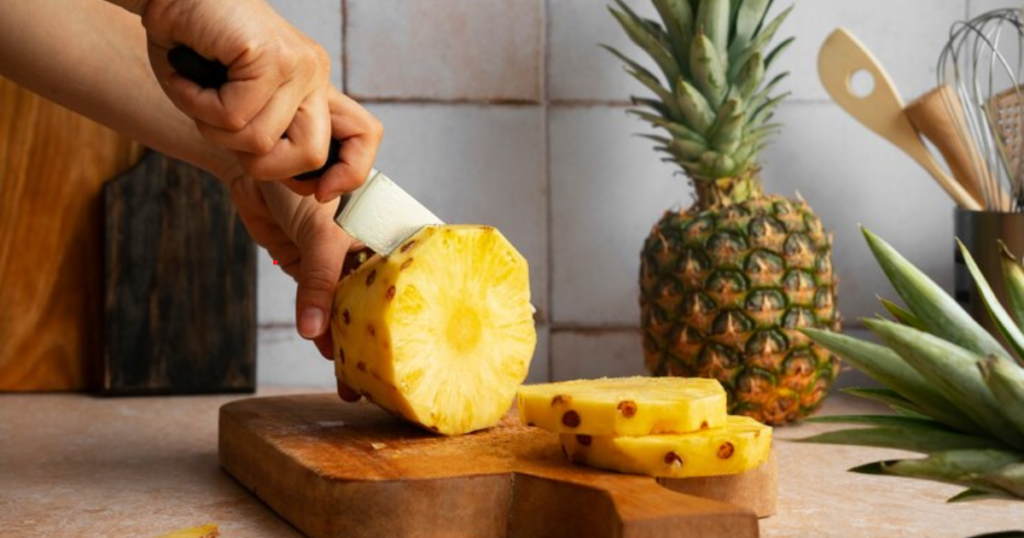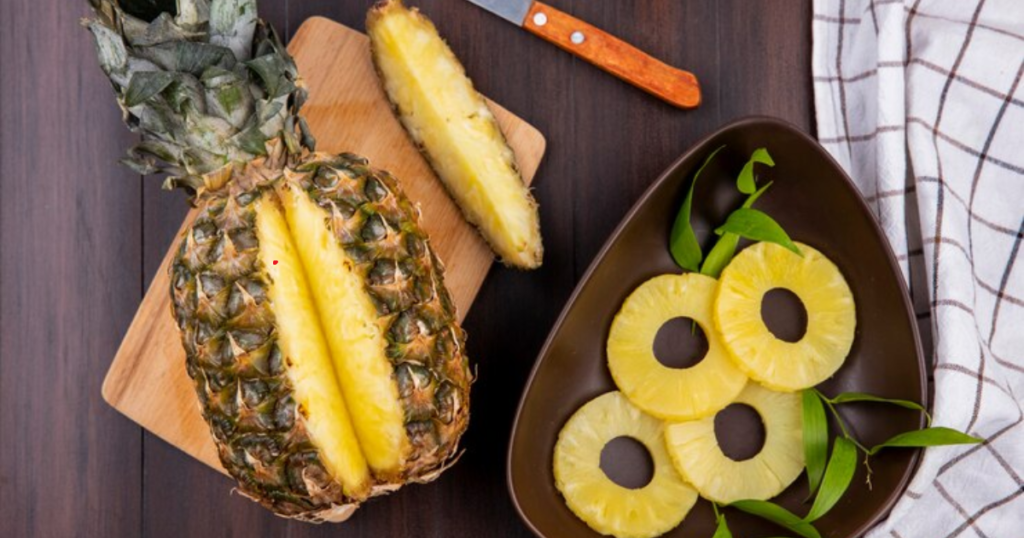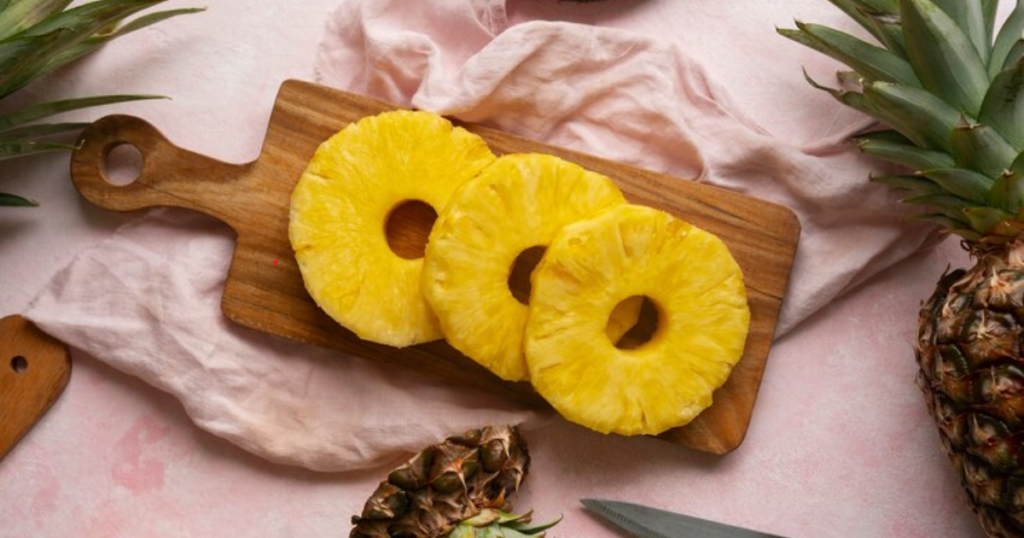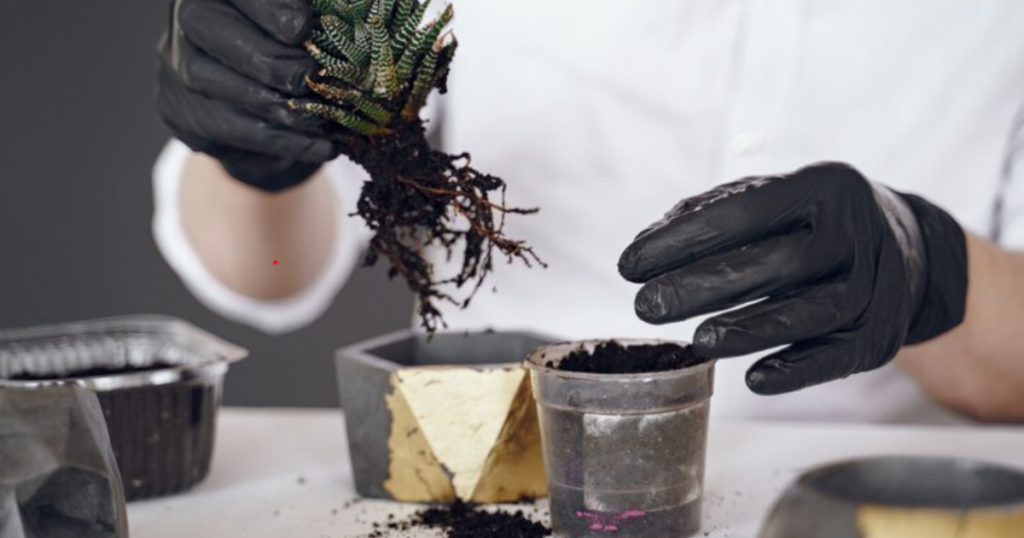Pineapples are a yummy tropical fruit that people love because they taste sweet and a little sour. They can be eaten fresh, used in desserts, or added to tasty dishes, making them a fun ingredient for many meals. But have you ever thought about whether pineapples have seeds? It’s an interesting question, and the answer might surprise you.
Pineapple Reproduction
Pineapples reproduce in a variety of ways. In the wild, they can reproduce sexually via seeds, but this is uncommon. Commercially, pineapples are typically propagated asexually. This indicates that new plants are propagated from portions of the original plant, such as the crown, slips, or suckers, rather than seeds.
Health Benefits of Pineapples
Pineapples have several health benefits due to their high nutritional content. Here are some of the main benefits:
- Nutrient-dense: Pineapples are high in vitamins and minerals such as vitamin C, manganese, vitamin B6, copper, thiamine, folate, and potassium.
- Antioxidants: The fruit includes flavonoids and phenolic acids, which help combat oxidative stress and lower the risk of chronic diseases.
- Supports Digestion: Pineapples include bromelain, an enzyme that aids digestion by breaking down protein molecules, hence reducing bloating and constipation.
- Weight Loss: Pineapples are low in calories and high in water, which can aid with weight management by increasing fullness and lowering overall calorie intake.
- Supports Eye Health: Pineapples include antioxidants and vitamin C, which can help preserve eye health and lower the risk of macular degeneration.
- Improves Skin Health: Vitamin C promotes collagen formation, which maintains skin firm and youthful. Furthermore, antioxidants protect the skin from UV and pollution-related damage.
- May Reduce Cancer Risk: According to some research, pineapple components such as bromelain and antioxidants may help reduce the risk of certain types of cancer by preventing cancer cell proliferation.

Do Pineapples Have Seeds?
Yes, pineapples have seeds, although they are rarely found in grocery store produce. Pineapple seeds are tiny, black or dark brown, and located within the flesh of the fruit. However, most commercially grown pineapples are propagated vegetatively, using cuttings such as crowns, slips, or suckers rather than seeds. This approach ensures consistent fruit quality and features.
Seeds are more commonly seen in wild pineapples and those produced in less regulated situations. If you look closely at the flesh of a pineapple, especially near the base, you may notice a few seeds lodged therein.

Why Don’t We See Pineapple Seeds Often?
The primary reason we rarely see seeds in pineapples is due to the way they are grown. Most commercial pineapple types have been bred to be seedless. This is accomplished by selective breeding and genetic alteration, which results in fruits that are more enticing to consumers—sweet, juicy, and seedless.
Propagation Without Seeds
Pineapples are primarily propagated asexually, which means that new plants sprout from portions of the old plant rather than seeds. The most prevalent approaches are:
- Crown Propagation: The leafy top of the pineapple, known as the crown, can be planted to produce a new pineapple plant.
- Slip Propagation: Slips are little shoots that sprout between the older pineapple leaves. These can be removed and replanted.
- Sucker Propagation: Suckers emerge from the base of the pineapple plant. They can be separated and replanted to produce new plants.
Can You Grow Pineapples from Seeds?
While it is possible to grow pineapples from seeds, it is not common practice due to the lengthy and unpredictable process. While it is feasible to cultivate pineapples from seeds, it is not widely practiced due to the time-consuming and uncertain process. Growing pineapples from seeds includes:
- Extracting the seeds from the fruit (if any).
- Clean and dry the seeds.
- Plant the seeds in an appropriate growth medium.
- Providing continuous moisture and temperature to promote germination.
- Once the seedlings have grown strong enough, they can be transplanted into larger pots or directly into the ground.
Growing pineapples from seeds can take several years before the plant bears fruit, making it a less enticing alternative than vegetative propagation, which produces fruit faster.

How To Grow Pineapple From Seed?
Growing a pineapple from seed requires more effort and time than reproducing it from the crown or slips, but it may be a gratifying experience. Here’s a step-by-step instruction for growing a pineapple from seed.
1. Obtain Pineapple Seeds
- Find Seeds: Buy a wild pineapple or an organic pineapple from the store, as commercially farmed pineapples are frequently seedless.
- Extract Seeds: Cut the fruit and look for little black or brown seeds inside the flesh. Gently remove the seeds and rinse them with water to eliminate any remaining fruit residue.
2. Prepare the Seeds
- Drying: Let the seeds dry on a paper towel for a day or two to reduce the risk of mold and rot.
3. Germinate the Seeds
- Soak Seeds: Place the seeds in a dish of water and soak for 24 hours to soften their coat.
- Planting Medium: Make a seed-starting mixture or combine peat and sand.
- Planting: Place the seeds about 1/4 inch deep in the moist medium.
- Environment: Place the container in a warm, sunny area. Pineapple seeds germinate around 75-85°F (24-29°C).
- Humidity: To retain humidity, cover the container with plastic wrap or a clear plastic lid.
4. Care for the Seedlings
- Watering: Keep the soil regularly moist but not overly wet.
- Light: Ensure that the seedlings receive enough of indirect sunshine.
- Patience: Germination can take several weeks or months.
5. Transplanting Seedlings
- Size: When the seedlings reach a few inches tall and have numerous sets of leaves, they are ready to transplant.
- Potting: Place the seedlings in individual pots filled with well-draining potting mix.
- Environment: Maintain warm temperatures and ample sunlight.
6. Growing Pineapple Plants
- sunshine: Pineapples prefer bright, indirect sunshine. Aim to get at least 6 hours of sunlight each day.
- soaking: Water the plants on a regular basis, allowing the soil to dry slightly between each soaking. Pineapples are sensitive to root rot, so avoid overwatering.
- Fertilization: Every few months, apply a balanced, slow-release fertilizer to offer the necessary nutrients.
7. Maturing and Fruiting
- Patience: Growing pineapples from seed requires time. It could take 2-3 years for the plant to grow and bear fruit.
- Care: Continue to care for the plant by providing adequate light, water, and nutrients.
8. Harvesting
- Fruit Development: When the plant matures, it produces a flower stem. The fruit will grow from the middle of the plant.
- Ripening: Let the pineapple mature on the plant. It is ready to harvest when it turns golden yellow and has a delicious aroma.
Growing a pineapple from seed is a slow but intriguing process that takes perseverance and attention. Following these procedures will allow you to enjoy the process of growing a pineapple plant from seed to fruit.

How Long Does It Take For Pineapples To Grow?
Pineapples take different amounts of time to grow depending on how they are propagated and the growth circumstances. Below is a general timeline for growing pineapples:
1. From Seed
- Germination: Pineapple seeds can take a few weeks to a few months to germinate.
- Seedling Stage: After germination, it takes several months for the seedlings to grow strong enough to be transplanted.
- Maturity: Once transplanted, it takes about 2-3 years for the plant to mature and produce fruit.
- Total Time: Growing pineapples from seed can take 2-4 years before you get a mature fruit-bearing plant.
2. From Crown, Slips, or Suckers
- Rooting: It takes a few weeks to a few months for the crown, slip, or sucker to develop roots and establish itself.
- Maturity: After rooting, it takes about 18-24 months for the plant to mature and produce fruit.
- Total Time: Growing pineapples from crowns, slips, or suckers typically takes 2-3 years from planting to harvest.
Read More: Lemon and Cucumber Water Benefits & How to Make It
Conclusion
To sum it up, pineapples can have seeds, but the ones we usually eat don’t because farmers grow special kinds without seeds. They grow new pineapple plants from parts of the old ones, not from seeds. You can eat pineapples fresh, cooked, or in drinks, and they taste great and are good for you.
People Also Ask
1. Do pineapples have seeds?
Yes, pineapples have seeds, but they are tiny and difficult to discover. Most store-bought pineapples are seedless because they are produced from the tops of other pineapples rather than from seeds.
2. Where can I find seeds in a pineapple?
If a pineapple contains seeds, they can be found around the core. They are small, black or dark brown, and frequently buried within the flesh of the fruit. You might need to look closely to find them!
3. Can you grow a pineapple from its seeds?
Yes, you can produce pineapples from their seeds, but it takes a long time. Most people produce fresh pineapples by planting the fruit’s green top, which is considerably faster and easier.
4. Why don’t store-bought pineapples have seeds?
Store-bought pineapples typically lack seeds because they are cultivated from the tops of other pineapples. This procedure does not develop seeds in the fruit. Furthermore, seedless pineapples are easier for people to eat.
5. How do pineapples grow if they don’t have seeds?
Pineapples sprout from the leafy top of another pineapple. If you chop off the top of a pineapple and plant it in soil, it will grow into another pineapple plant. This is a fun and simple method for growing your own pineapple at home!









Leave a Reply